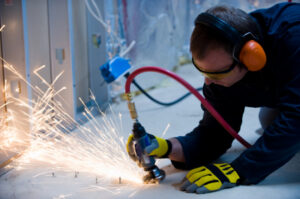Noise Level Surveys
Workplace Noise Level Surveys
Noise monitoring is an integral part of every effective hearing conservation program. Accurate measurements of employee noise exposures will determine if a program is needed, and if so, who must participate. In addition, noise level data is required to establish adequacy and appropriateness of hearing protectors as well as to identify areas which would require high noise warning signs.
We provide several types of noise level measurement. The type of measurement that is best for you will depend upon the work environments and processes specific to your company as well as upon the reasons for which you are requesting the survey.
Area Measurements
This method can provide an accurate estimate of noise exposure for individuals whose noise levels do not vary.
- Measurements obtained using Quest Type 1 Integrating Sound Level Meter
- Employee work areas and equipment noise levels are measured
- Provides average noise level measurement for brief duration exposures


Employee Dosimetry
Regulations, as well as best practices, require “representative” monitoring of employee noise exposures. When employee noise levels vary (ie, employees move in and out of noise and/or noise levels fluctuate), dosimetry may be the only means to obtain a representative sample.
- Use of State of the Art, Quest Type 2 Noise Logging Dosimeters
- Employees monitored for entire or representative work shift
- Dose and eight hour time weighted average (TWA) can be directly compared to regulatory references
- Time motion study:
- Details variability and employee description of noise levels throughout the exposure
- Is useful in selection of appropriate hearing protection devices
Octave Band Noise Level Monitoring
- Use of Quest Type 1 Integrating Sound Level Meter with Octave Band Analyzer
- Frequency (pitch) of the noise is measured as well as intensity (loudness)
- Data can help determine feasibility of engineering controls to reduce noise levels

